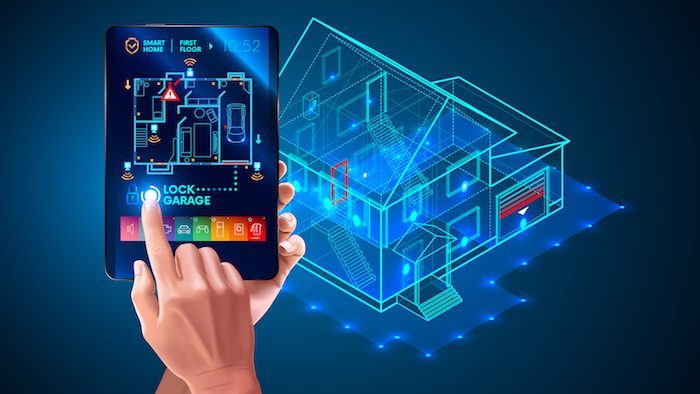Last Updated on 11 January 2023
Smart homes are a concept that has been around for some time, but one that has become much more accessible. Previously reserved only for tech gurus like Bill Gates and sci-fi, smart homes are more common and are a rapidly growing industry. In fact, the smart home market is estimated to reach $53.5B by 2022[1]. Smart technology is making our daily lives more comfortable, convenient, and safer, every day. As more and more products are developed with smart technology built in, the features you can automate in your home is growing. But what is a smart home?
A smart home is one that uses technology to automate and control home systems. The key to home automation is the ability to remotely control your connected home from your phone, computer, and more recently virtual assistants. A smart home is more than just programming lights or the coffee maker to turn off and on at certain times, but a fully integrated system you can seamlessly monitor and control everything. Additionally, one of the core aspects of smart home technology is the continued machine learning of your patterns by analyzing the information from your connected devices.
In a smart home, everything from large appliances to vacuums to home security systems can be connected to the internet, each other, and be controlled remotely. Your home can be as “smart,” as you’d like, from having a few connected devices to a fully automated house. The core driver of smart home solutions is convenience. In addition, smart home technology can help improve energy efficiency, comfort, and home security.
How Does a Smart Home Work?
Home automation works through a concept known as “the Internet of Things” or IoT. In your home, internet-enabled devices are all connected to a central network, your Wi-Fi network. Each of these items will be assigned a unique IP address, giving you the ability to access, monitor, and control the objects or features remotely.
How to Make Your Home Smart
At the core of the smart home is a central platform or hub to which the various intelligent devices are connected. In the past, creating a smart home hub required a substantial monetary and technological investment. However, today advances in machine learning, virtual assistants, and the products they integrate with are making smart home technology accessible to everyone. The easiest and most cost-effective way to create a smart home is first to choose the virtual assistant ecosystem which will function as your home’s central hub. Keep in mind that your smart home relies on the Wi-Fi connection, so you need to make sure to have high-speed internet.
- Choose Your Ecosystem – The three leading AI assistants are Google Assistant, Amazon Alexa, and Apple’s Siri. Although they’re similar, there are pros and cons to each ecosystem, so it’s worth spending the time to research which of the three assistants works best for your lifestyle first.
- Choose Your Hardware – Once you’ve selected the ecosystem, you’ll need to invest in the respective hardware, most likely a smart speaker, which will be the central smart home controller. For example, Google Assistant works with Google Home and Android phones, while Alexa works with Echo smart speakers. Apple’s smart home hub, Apple HomePod was released early in 2018. Although the hardware is relatively inexpensive (in comparison to a smart fridge) you ideally build one centralized ecosystem.
- Connect Your Devices – With the hardware linked to your account, you can start connecting devices. When purchasing new smart products, look for “work with” sticker and the specific assistant you selected. Each device will need to be connected to your virtual assistant. After that, it’s as simple as using your voice or smartphone to control all your connected devices.
Smart homes are highly customizable, giving users the freedom to choose what features and devices within the home to connected to a central hub. You can also add or remove connected devices at any time. Home automation is more than just convenience, learn about the other benefits of smart homes.
Swann is dedicated to making smart home security easily accessible to everyone. Swann’s Google Assistant security systems are the first multi-camera, wired security systems to integrate with Google Assistant. Hands-free, voice controlled security streamed to your smart time. All you have to do is ask Google to check on specific areas of your home.
Sources:
[1] https://www.statista.com/topics/2430/smart-homes/
